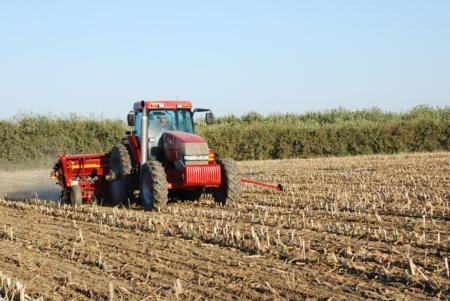Conservation agriculture applies to California
Mitchell, the chair of the UC Conservation Agriculture Systems Innovation Center, made the comment at the 6th World Congress on Conservation Agriculture in Winnipeg, Manitoba, last month.
After attending the congress, Mitchell said he is more strongly convinced that greater efficiencies and brighter economics in California agriculture could be achieved by employing conservation principles.
“Focusing on soil care will improve soil water intake and storage,” he said. “Reducing soil water evaporation can be achieved by preserving surface residues. Together these steps reduce energy use and greenhouse gas emissions – very important goals.”
The Manitoba congress drew more than 350 participants representing 47 countries. It was co-sponsored by the Conservation Agriculture Systems Alliance, the Conservation Technology Information Center, and the Canadian Soil and Water Conservation Society. California's CASI was represented by Mitchell and Monte Bottens, president of California Ag Solutions of Madera, a consulting and custom fertilizer support company.
Speakers at the conference suggested conservation agriculture principles are “transformative and not merely incremental means for achieving the kinds of change must be made to meet the global challenges of food production and natural resource conservation in the 21st Century,” Mitchell said. Modestly tweaking today's conventional agricultural systems, he said, “is not an option.”
Today conservation agriculture is used on about 11 percent of the world's total arable land. Implementation is increasing at an annual rate of about 7 to 8 million hectares, according to the U.N.'s Food and Agricultural Organization. Nearly half of the world's conservation agriculture acreage is found in the developing world. The South American countries of Brazil, Argentina and Paraguay, where the movement had its beginnings as a farmer-led process dating back to the mid-1970s, has about 80 percent implementation.
During his keynote address at the conference, David Montgomery, University of Washington professor of geology and author of Dirt: The Erosion of Civilizations, issued a “call to action.”
“Global soil degradation,” he said, “is an under-appreciated environmental crisis that occurs because of how we farm. We need to be more creative in terms of how we're intensifying agriculture to feed the post-oil world without cheap, fertilizer-intensive agriculture.”
Congress speaker Dwayne Beck, agronomy professor at South Dakota State University, also sounded an alarm.
“Never in history has mankind knowingly faced this type of impending catastrophe,” Beck said. “It is time to stop doing incremental things and start doing transformative things. You do not cross a chasm in two steps. We need to focus on where we want to be and emphasize systems, not details; actions, not reactions; and commitment, not merely involvement.”
CASI members are working with foundations and granting agencies to better position the organization to support implementation of conservation agriculture in California. For more information, contact Mitchell at (559) 303-9689.

